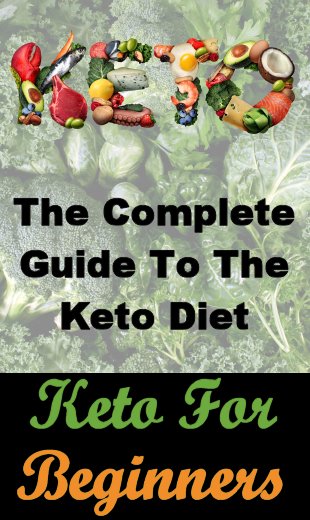Turmeric 101 And How Curcumin Can Help
I have mentioned turmeric in several other articles already, so it’s time to look at this plant in more detail – what it is, how it can help your health, and more.
What Is Turmeric?
Turmeric is a flowering plant, whose scientific name is Curcuma longa.
It is related to ginger (another plant with many health benefits), and it is primarily its roots that are of use.
For the gardening-minded, turmeric is a perennial, rhizomatous, herbaceous plant that is native to the Indian subcontinent and Southeast Asia. It thrives there because it requires temperatures between 68 and 86 F (20 and 30 C) as well a significant amount of annual rainfall – conditions that those areas provide.
How Is Turmeric Used?
It is used in three main ways, although other uses exist:
- In cooking.
- As a dye.
- For medicinal purposes.
Turmeric In Cooking
While turmeric leaves can be used in cooking, it is usually consumed either fresh (like ginger), or as a powder, which is made by boiling the rhizomes in water, drying them, and then grinding them into the bright, orangey-yellow powder that you’ve probably seen in jars of spice at the store.
In terms of nutrients, etc., turmeric powder is:
- 60 – 70% carbohydrates
- 6 – 13% water
- 6 – 8% protein
- 5 – 10% fat
- 3 – 7% dietary minerals
- 3 – 7% essential oils
- 2 – 7% dietary fibre
- 1 – 6% curcuminoids
And there are about eight calories in one teaspoon of turmeric powder (which takes approximately two minutes of walking to burn off).
You can use turmeric:
- As a colouring agent (e.g. some use it in place of saffron, which is incredibly expensive, even though it tastes more pungent).
- As a flavouring agent (e.g. in Indian and Thai foods such as curries).
- As a tea, by mixing one teaspoon of powdered turmeric with warm water. (One of my favourite teas is a mix of turmeric and ginger.)
- In smoothies.
Turmeric As A Dye
Turmeric has been used for centuries to create a bright orange / yellow dye for clothes and other fabrics.
This short video shows you how to do this easily at home:
It can also be used as a paint colouring, and if you visit the Amber Palace in Jaipur, for example, you’ll see plenty of plant-based colours on the walls that are still vivid after several centuries:

Turmeric As A Medicinal Plant
When it comes to its health benefits, there is a long list of ways in which people have claimed turmeric (or, more accurately, the curcumin it contains) can help you, over the course of thousands of years, including:
- Assisting in detoxification.
- Boosting eye health.
- Helping with post-operative recovery.
- Improving skin health.
- Killing fungus.
- Managing cholesterol.
- Managing diabetes.
- Managing inflammatory bowel disease (IBD).
- Preventing (or, at least, slowing down) blood clots that can lead to heart attacks, for example.
- Protecting cognitive health (including your memory) from the harmful effects of heavy ion irradiation, through an increase in the production of brain-derived neurotrophic factor (BDNF), perhaps because curcumin has been proven to be able to cross the blood-brain barrier.
- Protecting the liver from oxidative stress.
- Protecting you from free radicals, which cause oxidative stress.
- Reducing inflammation and the symptoms of inflammatory conditions such as arthritis.
- Reducing obesity.
- Reducing symptoms of depression.
- Relieving pain.
- Reducing the risk of heart disease.
- Supporting digestive health.
In fact, if you look on PubMed (which is a site managed by the US National Library of Medicine and National Institutes of Health), there are currently over 14,000 peer-reviewed articles about turmeric and curcumin, and this number is growing all the time.
You’ll also find thousands of abstracts about curcumin here.
How You Can Consume Turmeric
Turmeric / curcumin can be ingested or obtained via:
- Essential oils (e.g. to use in a diffuser). Note that if you ingest it directly, you should do so with extreme caution and ensure it is adequately diluted first. And if you apply it topically, it needs to be blended with a carrier oil (e.g. grapeseed) because otherwise it can cause skin irritation.
- Fresh root, used in cooking like ginger would be.
- Leaves, which can be used to impart a similar colour as the powder does.
- Powder (as a colouring and/or flavouring agent when cooking or baking).
- Supplements – but try to make sure it’s as pure as possible, with no unnecessary additives and no contaminants, and look for one that also includes Bioperine (which comes from black pepper – see below for why this is important).
Other Uses
Here are a few other, less common ways you can use turmeric:
- As a paste, to help cuts and wounds.
- As a teeth whitener – yes, in spite of the fact it usually leaves a yellow stain on things.
- Mixed with yoghourt and/or aloe vera gel, as a way to relieve sunburn.
- Mixed with yoghourt and/or glycerine, as a facial mask to help with acne.
- To make herbal soap.
A Vital Tip
However useful curcumin may be, the downside is that it is not absorbed into your bloodstream very effectively.
However, there is one simple solution to this – black pepper.
Black pepper contains a substance called piperine (which is what gives it that strong taste), and
when you ingest black pepper (i.e. the piperine it contains), it can boost curcumin absorption by as much as 2,000% according to some studies.
Potential Side-Effects
The following are side-effects that can occur when turmeric is consumed in high doses:
- Diarrhoea
- Hyperactive gallbladder contractions
- Hypotension (lowered blood pressure)
- Increased menstrual flow
- Increased risk of bleeding
- Nausea
- Uterine contractions in pregnant women
So, if you notice any of these (which is rare), then you should eliminate turmeric (or curcumin) and see a doctor immediately.
It’s also possible that some people may have an allergic reaction to turmeric, which manifests as itchy skin and/or a rash.
Again, if this happens, then unfortunately turmeric may not be for you.
And finally, curcumin has been shown to possess blood-thinning properties, so if you are currently taking anticoagulants, curcumin may amplify the effects of these drugs. You should therefore speak to your doctor about this first.
Conclusion
Turmeric is a popular multi-purpose spice when used in the kitchen, and a versatile choice when used for medicinal reasons.
So, however you decide to use it, unless you are medically contraindicated, it will probably help you in all sorts of ways.
And finally, don’t forget to check out the 25 recipes I’ve found that use turmeric – there are some items there you probably won’t be expecting!
Additional Resources
These are suggestions for those who wish to delve deeper into any of the above, and all of the turmeric products are ones I use:
- Aromatherapy Diffusers
- Turmeric Capsules (With Bioperine)
- Turmeric Essential Oil
- Turmeric Ginger Tea
- Turmeric Powder







